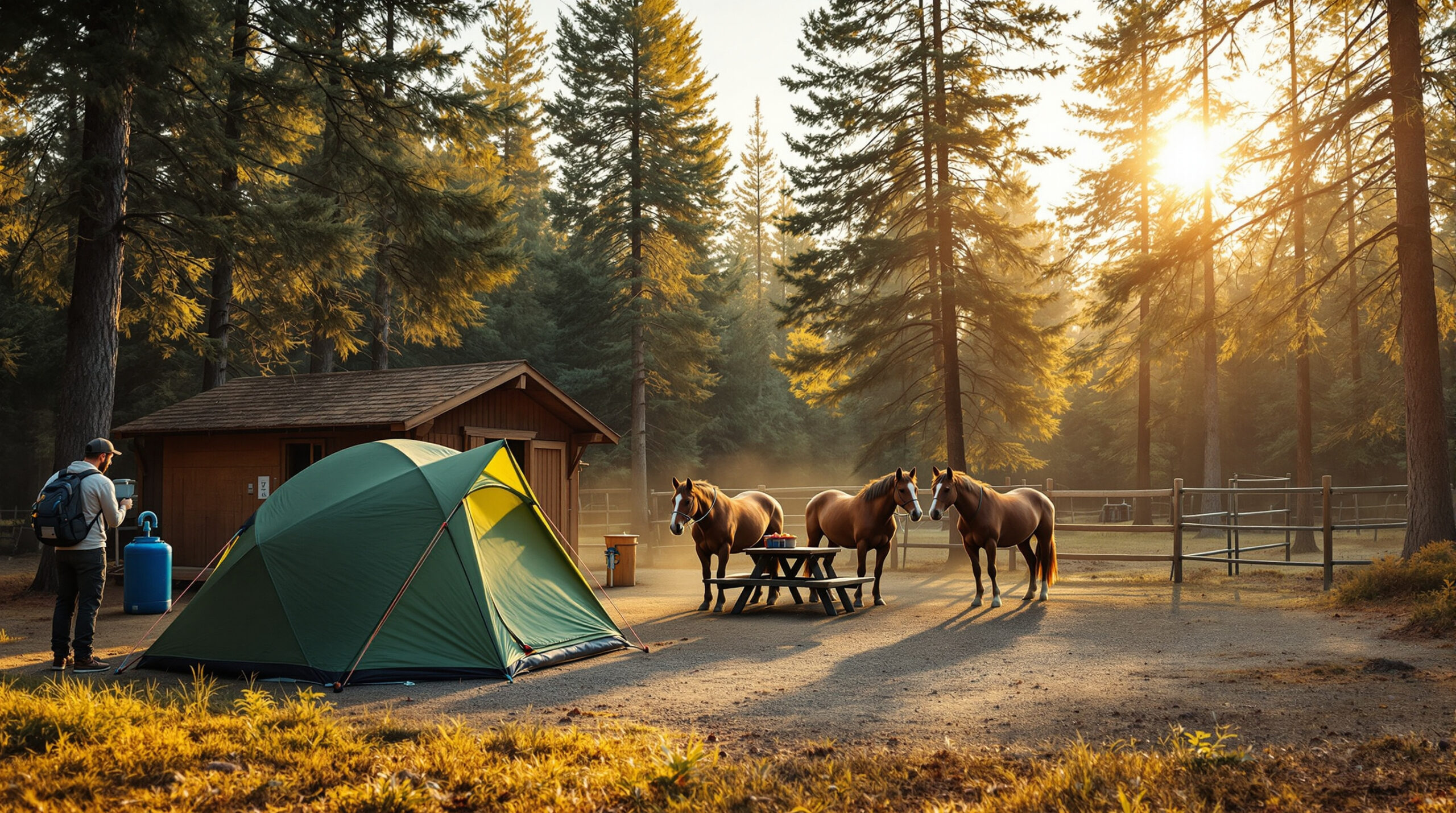SALEM, Ore. — Campers still hunting for a Labor Day site have one unexpected option left: the Oregon Department of Forestry says horse campgrounds routinely stay open even after standard loops jam up, a tip the agency shared in late-August guidance to late-season travelers state forestry officials issued ahead of the holiday rush.
Most prime forest sites are reserved months in advance, but ODF framed the advice as a simple workaround rather than a policy change, noting that equestrian pads rarely reach capacity while traditional campsites disappear from the inventory weeks earlier, that the broadcast report noted.
“Try searching for a horse campground,” Tim Hoffman, an ODF spokesman, said.
Horse camps differ from family loops in key ways. They are purpose-built, drive-in spots able to handle trailers, with corrals, potable water and manure bins on site. “They’re all drive-in sites, because they’re set up for horse trailers,” Hoffman said. “They have corals and access to water and manure bins. But there’s also areas for tent camping. They’re just with the horses,” he added the agency said.
Trails leaving these facilities are open to hikers and mountain bikers, with only motorized use barred, according to a Central Oregon outlet.
Sites that still showed openings on ReserveAmerica late last week included Northrup Creek in the Clatsop State Forest, Santiam Horse Camp east of Salem, Stagecoach in the Tillamook State Forest and Reehers Camp in northwest Oregon, part of ODF’s list. Travelers can locate these sites by searching ReserveAmerica for “horse campground.”
For campground owners eyeing overflow potential, equestrian loops can be tweaked quickly to welcome guests without stock animals. Recommended adjustments include placing tent pads or RV spurs 50–75 feet from corrals; posting right-of-way signs that spell out horse-hiker-bike etiquette; swapping in picnic tables with swing-out saddle racks; supplying wheelbarrows and a compost bin for weekly manure turns; installing potable spigots uphill from troughs with anti-backflow valves; and adding a two-minute etiquette video link to confirmation emails.
Oregon’s state forests are spaces for everyone, said Joe Offer, ODF’s recreation, education and interpretation program manager, underscoring the agency’s effort to steer crowds toward quieter corners of the system.
Repositioning equestrian pads for overflow requires more than a fresh sign—it calls for smart merchandising. Operators can label sites as dual-use inside property-management software, trigger 24-, 48- and 72-hour availability alerts to past guests, apply micro-dynamic pricing after noon on arrival day, retarget social feeds with photos of families in horse loops and bundle upsells such as guided trail passes or hayrides.
The payoff is twofold: reduced pressure on flagship campgrounds and a new revenue stream that introduces visitors to multi-use trails and horseback culture while diversifying the guest mix.
Owners may want to audit equestrian or overflow loops now so they are ready for the next peak weekend.


